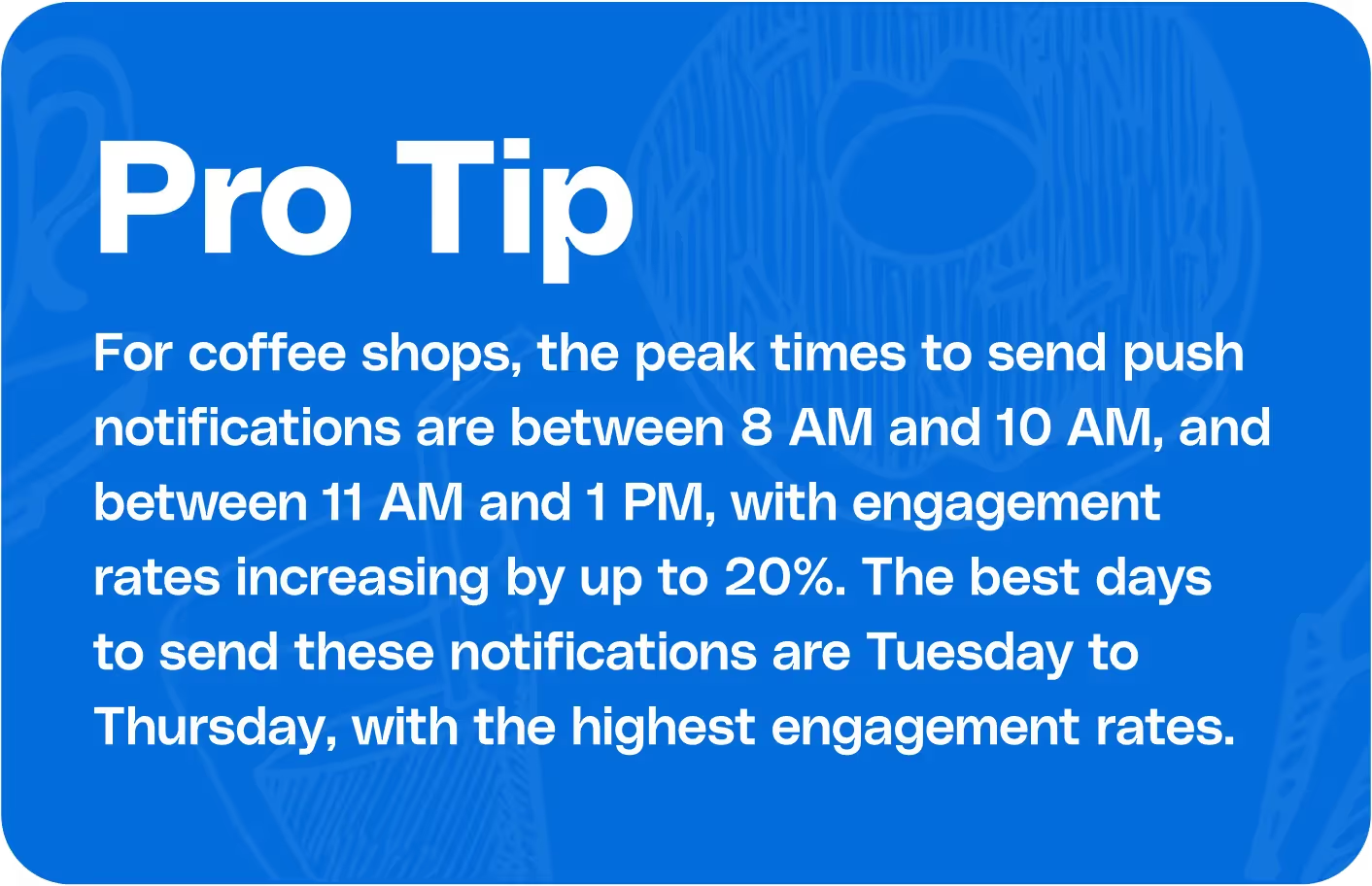Timing is crucial when it comes to push notifications for your restaurant or coffee shop. To maximize engagement, you need to understand your audience's habits and preferences. Analyze your customer data to identify peak ordering times and adjust your notification schedule accordingly. For instance, if you notice a surge in coffee orders around 7 AM on weekdays, consider sending a promotional notification for your breakfast menu at 6:30 AM to capture that audience. Also avoid sending breakfast deals at night or around 5 PM when most people are sleeping, as these notifications would be irrelevant and could irritate customers. Only send promotions during times when your target customers are likely awake and active.
Holidays, weekends, and local events present unique opportunities for targeted notifications. Create a calendar of important dates and plan your messaging strategy. For example, you might send a notification about your Valentine's Day special menu a week before the holiday, followed by a reminder the day before. During slow hours, use push notifications to drive foot traffic with limited-time offers or happy hour specials.

Utilize analytics tools to refine your timing strategy. Track metrics such as open rates, click-through rates, and conversion rates for notifications sent at different times. This data will help you identify patterns and optimize your scheduling. Remember that timing preferences may vary depending on your location and target demographic, so continually test and adjust your approach.
While timely notifications can boost sales, it's essential to strike a balance to avoid overwhelming your customers. As a general rule, limit push notifications to 2-3 per week, unless you're running a special campaign. Pay attention to unsubscribe rates and customer feedback to gauge whether you're hitting the right frequency.
Improve customer engagement with a smart push notification strategy. Use timing, occasion-based messages, data analytics, and the right frequency to avoid being intrusive. Remember, the goal is to provide value and relevance with every notification you send.